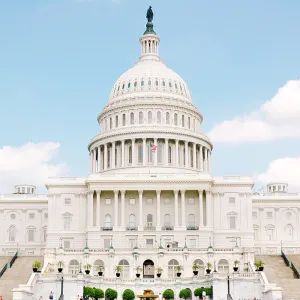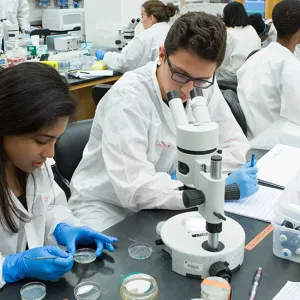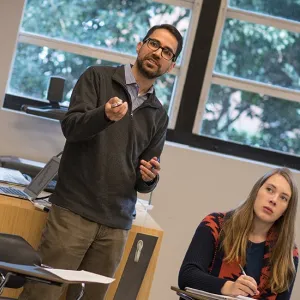Institutions take seriously the task of educating and training students, faculty, and staff to combat sexual assault and misconduct. Given the size and diversity of universities’ communities, the many facets of these issues (e.g., university policies and resources, bystander intervention), and the ever-changing landscape as new information comes to light, such education and training are a considerable undertaking.
Processes for supporting victims and adjudicating complaints are continually being improved, but much education and training is geared first and foremost toward prevention. Prevention is the top priority: universities want to stop sexual assault and misconduct from occurring in the first place, and evidence-based education and training methods is an important way of achieving that goal.
The Violence Against Women Reauthorization Act (VAWA), signed into law in 2014, amended the Clery Act in several ways, and provided a federal baseline to ensure that all institutions of higher education provided programming for students, faculty, and staff focusing on:
- Primary prevention and awareness programs for all incoming students and new employees
- Safe and positive options for bystander intervention
- Information on risk reduction to recognize warning signs of abusive behavior; and
- Ongoing prevention and awareness programs for students and faculty.
Many of the institutions responding to the Campus Activities Survey have long exceeded this baseline.
Over the last three academic years, 100% of responding institutions have changed or are in the process of changing their education and training for students and faculty. For staff, the figure is 98%.
Many institutions noted that training is mandatory for all new students, often as part of orientation. Universities are finding diverse and engaging ways to convey this information, including online education, skits, and other dramatizations. For example, at Johns Hopkins University, freshman orientation includes a talk from a victim of sexual assault as well as live training from the university’s Title IX Coordinator. At Stanford University, all incoming undergraduate students are required to attend “Beyond Sex Ed: Consent and Sexuality at Stanford,” a student-led and student-organized program that features diverse personal stories from current students within a framework for thinking about sexuality interpersonally and culturally. This program asks students to think about their own sexual citizenship and enhance skills for articulating and respecting boundaries and for standing up for students who may need help.
At the University of Oregon , the summer theatre production — “It Can’t Be Rape,” presented by the Sexual Wellness Advocacy Team (SWAT) — is a mandatory presentation delivered to the 4,000 students who attend the summer orientation sessions. The production includes education about consent, sexual assault, dating/partner violence, stalking, and sexual harassment. On-site advocacy is provided during the program. In addition, resource support materials are provided to students during the event.
Institutions are delivering training to students in multiple doses and with increased frequency. For example, Iowa State University transitioned from requiring training for students once during their academic experience to an annual training requirement. The University of Wisconsin-Madison has significantly expanded student educational efforts by requiring a multi-dose prevention program on sexual violence for all students living in university housing, an online program before arrival, and an in-person training once on campus. An online training program was added for all graduate and professional students.
Vanderbilt University requires all incoming students (first-year, transfer, graduate, and professional) to complete an online sexual assault prevention module before arriving on campus. Incoming first-year students attend a program during their first two weeks on campus at which they are introduced to university resources, reporting options, available safety measures, bystander intervention, and risk reduction. At MIT, new undergraduates both complete an online training prior to orientation and attend an orientation program focused on prevention.
Universities are developing and offering courses and workshops around these topics. For example, Boston University offers a one-credit, elective course to first-year students that includes programming on healthy consent and communication. Rice University created a mandatory, five-class workshop for freshmen. Faculty and staff also receive mandatory training. For example, Brown University’s required module for faculty and staff covers them both as individuals who may be impacted by sexual assault and misconduct as well as employees who are likely to receive student reports.
All staff at Carnegie Mellon University now get an in-person presentation as part of their university onboarding, in addition to completing an online module. Indiana University developed an online module for faculty and staff to provide them training on the university’s sexual misconduct policy, forms of sexual misconduct, their reporting obligations, and educating them on how to respond helpfully to students; it is delivered to employees annually.
This training extends to students who play teaching roles. For example, at Brandeis University, graduate teaching assistants complete a mandatory Title IX training, and a pilot training was held for undergraduate teaching assistants. Northwestern University developed online training on sexual misconduct and sex discrimination in 2015, and it is now expected for all new faculty, staff, and graduate students.
The student populations at many universities are incredibly diverse in terms of race, gender, age, sexual orientation, and cultural background. Survey results have provided information on populations more vulnerable to specific types of sexual assault and misconduct, as well as situations where this may arise. Different types of students — for instance, undergraduate and graduate students — face distinct challenges and may be more likely to encounter sexual assault and misconduct in particular types of situations. To supplement programming for all students, faculty, and staff, universities have developed and expanded special programs, some of which are mandatory, some made freely available, and some provided upon request.
Over the last three academic years, 84% (46/55) of institutions have developed new programs, education, or interventions for specific student populations or types of students.
The Duke University Women’s Center is partnering with women of color on campus to collect the stories that depict the unique experiences of undergraduate and graduate/professional women of color as it relates to gender violence and sexual assault. This collaborative exploration is part of a larger Women’s Center initiative sponsored by the Department of Justice and the Center for Public Policy to identify, implement, and assess creative environmental or situational interventions to prevent and respond to gender violence and sexual assault. Duke is also developing prevention programming specifically for men.
MIT is currently part of a grant consortium to develop situational prevention strategies focused on the LGBTQ community. Michigan State University has developed and piloted specialized workshops for LGBTQ and international students. The LGBTQ workshop is delivered by LGBTQ peer educators and includes LGBTQ-specific scenarios, in-depth information on types of discrimination and hate crimes, community-specific statistics and examples of abuse. The international student workshop was designed in response to international student input. It is delivered largely by international peer educators and includes removal of slang, simplified descriptions of terms and policies, community-specific scenarios, and more in-depth information that may impact this community, such as visa information and cultural dynamics.
Some institutions have worked with students involved in Greek life to develop programs. For example, the University of Kansas’s CARE Sisters program engages students involved in Greek life, empowering women to be active participants in creating a safer and more supportive Greek community. Through peer education, campus outreach, and support of victims, the CARE Sisters program unifies the Greek community in preventing and stopping sexual and domestic violence. CARE Sisters will collaborate with campus and community partners to provide appropriate resources and bring awareness of interpersonal violence to a wider audience. MIT’s Greek community has partnered with the university to develop sexual assault prevention programs as part of their new-member orientation.
Universities have also developed programs for student athletes and members of other student organizations. For example, at Cornell University, all varsity athletes, coaches, and trainers are required to attend an orientation event covering bystander intervention in sexual violence as well as other college health topics.
Due to recent changes in New York State law, all athletes and officers of student organizations applying for new or renewed registration are required to take an online sexual violence prevention training, which covers domestic violence, dating violence, and stalking, Title IX definitions, resources specific to Cornell, and expectations in regard to these topics. The online training helps student leaders respond effectively to concerns about these issues, learn more about resources on campus, and intervene in situations safely.
The University of Michigan has developed an in-person training program focusing on understanding university policies and increasing bystander intervention skills that is delivered to student leaders on campus, including all NCAA athletes and coaches, intramural coaches and team leaders, participants in Greek life, members of ROTC, marching band members, and other campus groups.
Universities also offer the opportunity for student groups and departments to work with relevant officers to tailor programs for specific populations. At Columbia University, two examples include a panel on sexism in the workplace for business students hosted by business leaders, and workshops for art students about how to engage with topics surrounding sexual assault in art.
One critical area that colleges are spending more time on is bystander intervention training. Bystanders witness or see a specific action or event, but aren’t the direct actors in that event. Training students to intervene properly is a way to reduce campus sexual assault and misconduct. Nearly 70% (38/55) of responding institutions specifically mentioned bystander intervention training, though it was not specifically asked about in the Campus Activities Survey.
Some institutions use externally developed programs. For example, nine institutions mentioned Green Dot, a comprehensive, research-informed approach to violence prevention that capitalizes on the power of peer and cultural influence. Green Dot’s approach (motivational speeches and intensive bystander training) draws from research in multiple disciplines, and its ultimate goal is “preparing organizations/communities to implement a strategy of violence prevention that consistently, measurably reduces power-based personal violence (including sexual violence, domestic violence, dating violence, stalking, child abuse, elder abuse and bullying).”
Other institutions have developed their own bystander training programs, some of which involve videos, skits, or theater productions/dramatizations. For example, the University of Maryland utilizes the research-informed bystander intervention strategy called Step UP. Step UP is a pro-social bystander approach in which awareness is built around helping behaviors. With the overall goal of increasing campus safety and well-being of others, Step UP is designed to increase motivation to help, and to develop confidence in using helping skills when responding to problems or concerns.
Yale University, through a collaborative effort between students and administrators, has developed a bystander intervention workshop specifically geared to graduate and professional students, focusing on sexual harassment behaviors and teaching concrete intervention skills. An accompanying “toolkit” is designed to help schools and departments tailor the workshop to local norms and needs and to serve as a guide for workshop facilitators.
At the University of Colorado Boulder, all new undergraduate students must attend an in-person training on bystander intervention skills. The university is also launching a new campaign called “Don’t Ignore It” that will address top barriers that keep people from reporting or intervening as bystanders. The website will have additional information and resources for understanding reporting options as well as education on bystander intervention skills, skills for creating an effective “buddy system” for looking out for friends, and skills for effectively responding to friends and peers who disclose a traumatic event.




